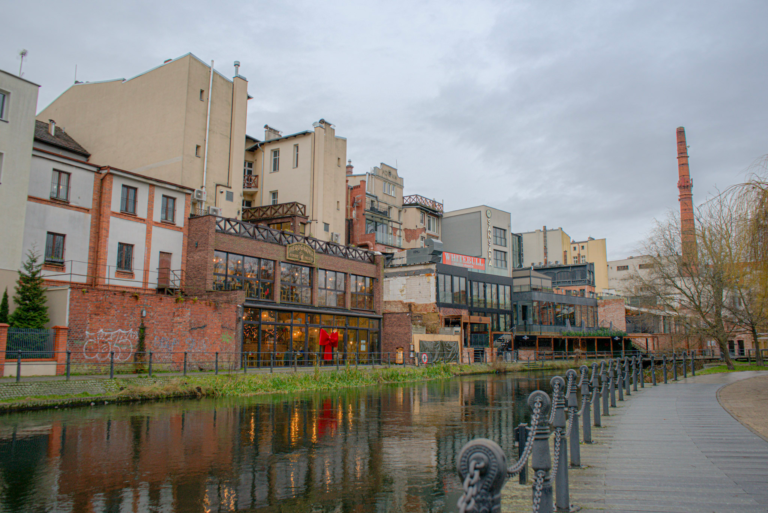10 Ways to Embrace Sustainable Travel: A Beginner’s Guide
Traveling is one of life’s greatest joys, offering new experiences, cultures, and perspectives. It’s a powerful teacher, opening our minds and hearts to the world around us. However, to ensure we can continue exploring and enjoying these wonders,it’s essential to travel responsibly. By embracing sustainable travel, we can protect our planet and support local communities, making our adventures both meaningful and impactful.
Sustainable travel is not just a passing trend; it is a vital practice for the future of tourism. According to the UNWTO, sustainable travel is defined as:
“Travel that takes full account of its current and future economic, social, and environmental impacts, addressing the needs of visitors, the industry, the environment, and host communities.”
Furthermore, a survey by Booking.com revealed that an impressive 76% of travelers in 2023 expressed a desire to travel more sustainably over the next 12 months.
With this growing awareness, here’s a beginner’s guide to sustainable travel, filled with practical tips to help you make a positive impact on your adventures and embrace more sustainable travel practices.
1. Choose Eco-Friendly Accommodations
If you feel overwhelmed by all the sustainable travel talk, this is a great place to start. Choosing accommodations that align with sustainable travel practices is essential.
Begin by selecting hotels and lodgings that prioritize sustainability. Look for certifications like LEED or Green Key, which indicate eco-friendly practices such as energy efficiency, waste reduction, and support for local communities. Staying in such places reduces your environmental footprint and supports businesses committed to sustainability.
Here are two practical tips to help you choose:
- Check Guest Reviews: Reading guest reviews can provide insights into how well the property implements its sustainability claims. Previous guests’ experiences can be a valuable resource.
- Support Accommodations with Green Spaces: Properties that maintain green spaces, such as gardens or nature reserves, contribute to biodiversity and provide a pleasant environment for guests.
Lastly, be cautious of greenwashing. Greenwashing is when a company falsely claims to be environmentally friendly to attract eco-conscious consumers. These claims are often vague, misleading, or unsubstantiated.
To avoid falling for greenwashing, look for specific certifications like LEED (Leadership in Energy and Environmental Design), Green Globe, TripAdvisor Green Leaders, Green Tourism Initiative, Green Key Global, EarthCheck, and Green Seal. There are also several regional certifications to consider.
By being mindful of these factors, you can make more informed choices and support truly sustainable accommodations.
2. Pack Light
Packing light isn’t just convenient; it also reduces the weight of planes, trains, and automobiles, leading to lower carbon emissions. Aim to bring only what you need and choose versatile clothing that can be mixed and matched, promoting sustainable travel practices.
Traveling with less luggage also enhances mobility, making it easier to navigate through cities and leading to more spontaneous and flexible travel experiences.
To minimize the items you pack, use packing cubes to organize your luggage and compress your clothes. Additionally, opt for multipurpose items that can be worn multiple times.
3. Use Public Transportation
Instead of renting a car, explore your destination using public transportation, bikes, trains, or even on foot. This reduces your carbon footprint and allows you to experience the local culture more intimately. Plus, it’s often more affordable can lead to unexpected adventures, and is a key element of sustainable travel.
This also reduces carbon emissions, decreases air pollution, and promotes healthier communities and lifestyles.
To make your journey even smoother, consider using Trainline. This digital platform allows you to easily book train and bus tickets across Europe. With Trainline, you can compare prices, schedules, and routes from various operators, ensuring you find the best travel options. Plus, the platform offers real-time travel updates and mobile tickets, making your travel experience hassle-free. Whether you’re navigating a bustling city or traveling between countries, Trainline simplifies your public transportation needs.
Fewer cars on the roads mean less noise pollution, and you save money by not renting a car.
4. Support Local Economies
When you spend money locally, you help sustain the community you’re visiting. Eat at local restaurants, buy souvenirs from local artisans, and hire local guides. These actions embody the principles of sustainable travel.
Tourism creates jobs in various sectors such as hospitality, transportation, and guiding services. This provides employment opportunities for residents.
This ensures your travel dollars benefit the people who live there and help preserve their culture and traditions.
All of this flows into community empowerment because you are engaging with local communities in tourism planning and decision-making processes ensuring that tourism development aligns with their needs and priorities.
5. Reduce Plastic Use
Single-use plastics are a significant environmental issue. Bring a reusable water bottle, shopping bag, and utensils to minimize your plastic waste. Many destinations now have refill stations for water bottles, making it easier to stay hydrated without contributing to plastic pollution. This is a vital aspect of sustainable travel.
6. Respect Local Cultures and Environments
Learn about the customs and traditions of the places you visit. Show respect by following local guidelines and being mindful of your behavior. When visiting natural sites, stick to marked paths and avoid disturbing wildlife. Your respect helps preserve these places for future generations, which is in line with sustainable travel principles.
7. Choose Sustainable Activities
Opt for activities that promote conservation and respect for nature. Wildlife tours, for example, should be led by reputable organizations prioritizing animal welfare and habitat preservation. Avoid activities that exploit animals or harm the environment, promoting sustainable travel choices.
For example, e-biking is a great activity you can do while on your travels, if you plan on visiting the Prosecco hills in Italy. I love taking this route as it gets me out and about to places I might not otherwise see!

8. Offset Your Carbon Footprint
Consider purchasing carbon offsets for your flights and other travel activities. Many organizations offer programs investing in renewable energy projects or reforestation efforts to balance your environmental impact. This is a crucial step in sustainable travel.
9. Conserve Water and Energy
Be mindful of your water and energy use while traveling. Take shorter showers, turn off lights and electronics when not used, and reuse towels and linens. Small actions can significantly save resources, adhering to sustainable travel practices.
10. Educate Yourself and Others
Stay informed about sustainable travel practices and share your knowledge with fellow travelers. The more people commit to sustainable travel, the greater the positive impact we can collectively make.
By incorporating these tips into your travel plans, you can enjoy your adventures while protecting the planet and supporting local communities. Sustainable travel is not just a trend; it’s a responsible way to explore the world.

Curious about Transformational Travel? I’ve got some great examples in this blog post.







This is a great resource! Thank you for sharing it.
You’re welcome! Glad I could help 🙂
Thanks for all the great tips. I can’t wait for my next trip so I can incorporate them into my travel plans.
No problem, Lynn! <3 glad you enjoyed this!
This is more than sustainable travel. This is also anxiety-free travel!
Heck yeah it is! I say!